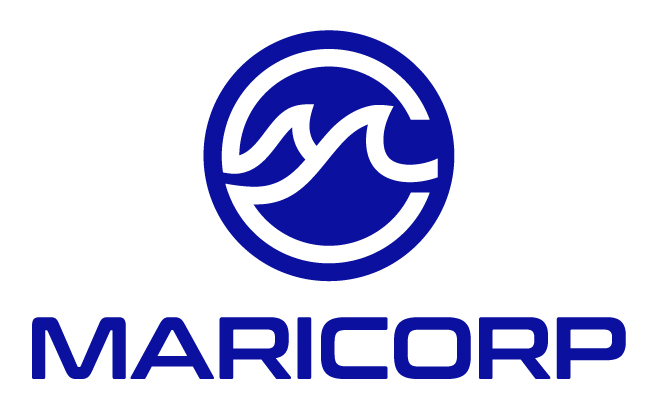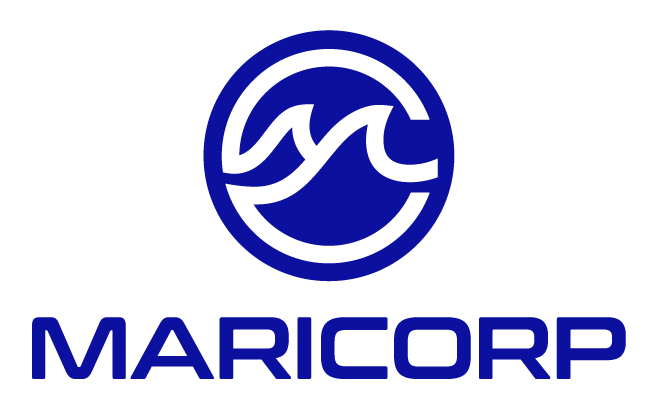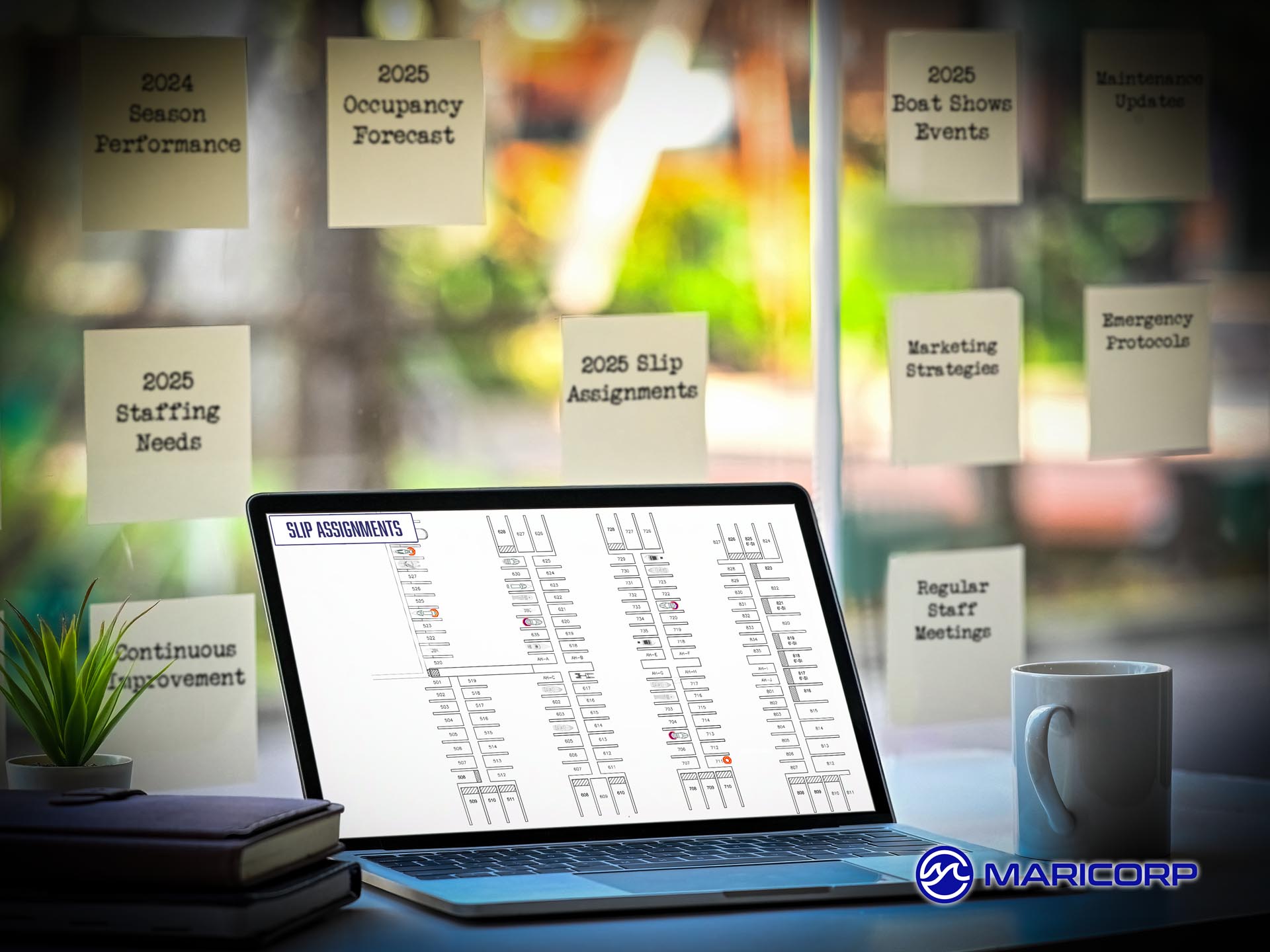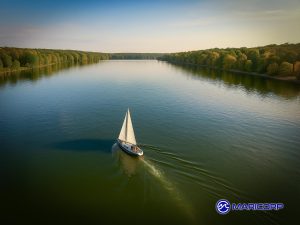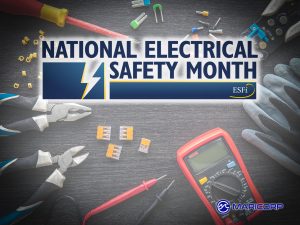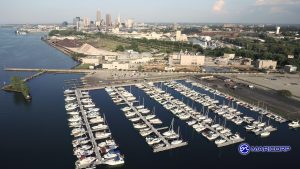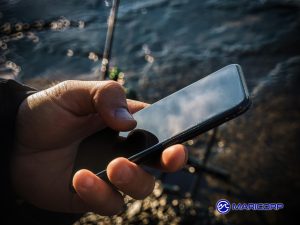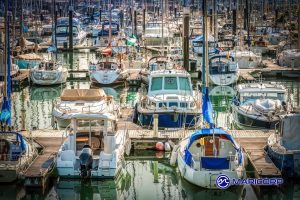A Strong Off-Season Preparation for a Successful Busy Season
Preparing for the Busy Boating Season: Strategies for Marinas During the Off-Season
Properly preparing for a high-traffic boating season can make all the difference in delivering an exceptional customer experience while maintaining efficient operations. During off-season preparation, marina managers have an ideal window to review past performance, implement new strategies, and ready staff and facilities for the coming influx of boaters. From forecasting occupancy rates to scheduling personnel and coordinating slip assignments, each aspect of planning contributes to a smooth, profitable season. Below are key considerations and best practices to help marinas optimize their off-season preparation efforts and stay one step ahead of the spring surge.
1. Analyze Last Season’s Performance
A thorough review of the previous season provides essential insights into what worked well and where improvements are needed. This includes occupancy rates, slip turnover times, and even customer feedback.
- Occupancy Trends
- Examine monthly and weekly occupancy data to spot peak usage periods.
- Identify any prolonged lulls when occupancy dipped significantly.
- Look for patterns in cancellations, late arrivals, or boaters extending their stay.
- Customer Feedback
- Compile online reviews from platforms like Google Maps, or dedicated boating forums.
- Collect survey responses from past slip holders and transient visitors, focusing on marina amenities, staff interactions, and overall satisfaction.
- Categorize feedback into topics such as cleanliness, security, and service quality to pinpoint where operational improvements can be made.
- Financial Metrics
- Compare slip rental revenue to ancillary services like fuel sales, maintenance, or retail.
- Assess profitability by segment (e.g., transient vs. long-term slip holders) to refine marketing and pricing strategies.
- Examine overhead costs for areas like staffing, utilities, and repairs to find opportunities for savings.
This data-driven approach enables management to set realistic goals and craft a roadmap for off-season preparation, ensuring that any new initiatives address the most critical gaps.
2. Forecast Occupancy and Slip Demand
Determining anticipated occupancy rates is a cornerstone of off-season preparation. Accurate forecasting informs staffing decisions, budgeting, and promotional campaigns.
- Historical Occupancy Rates
- Use data from the past two to three seasons to establish patterns and predict baseline occupancy for the coming months.
- Factor in local events (e.g., regattas, fishing tournaments) that can drive temporary surges in demand.
- Market Research
- Keep tabs on regional trends by reading boating industry publications and attending webinars or conferences.
- Network with other marinas or tourism boards to gauge whether overall boating interest is expected to rise or fall.
- Investigate demographic shifts—such as the growing popularity of smaller, trailerable boats—to adjust slip configurations or marketing tactics.
- Reservation Tracking
- If advanced bookings are allowed, track these inquiries closely to refine occupancy forecasts.
- Use smart software like Falco, Dockwa or Snag-A-Slip to monitor slip reservation volumes in real time.
- Incorporate weather patterns, such as the likelihood of early spring warmth, to adjust staffing and supply orders accordingly.
With well-founded occupancy forecasts, marinas can confidently plan staff schedules, set rates, and optimize slip assignments, ultimately enhancing the guest experience.
3. Create a Comprehensive Staffing Plan
Having the right people in the right positions is critical for maintaining high service standards during peak boating season. Off-season preparation offers an ideal window to evaluate staffing needs, recruit new talent, and schedule training programs.
- Assess Current Workforce
- Review each team member’s strengths and weaknesses to ensure the best alignment of roles.
- Identify skill gaps—such as mechanical expertise or customer service proficiency—and plan to fill them before the rush.
- Survey staff about their career goals, offering cross-training opportunities where feasible to boost morale and retention.
- Develop Seasonal Hiring Strategies
- Post job openings in local maritime schools, marine-focused websites, and social media groups to attract qualified candidates.
- Consider flexible work arrangements, especially for short-term positions like dockhands or event staff.
- Schedule interviews and onboard new hires during quieter months, allowing them to acclimate to marina protocols.
- Establish Training Protocols
- Offer workshops on best practices for docking assistance, fueling procedures, or slip assignment management.
- Provide refresher courses on safety measures, first aid, and emergency readiness.
- Encourage staff to stay updated on maritime regulations by attending local Coast Guard seminars or relevant webinars.
- Create Staff Schedules
- Use labor management software to draft rotating rosters, ensuring adequate coverage during anticipated peak times.
- Allow flexible shift swaps when possible to maintain a motivated and reliable workforce.
- Align staff schedules with slip demand forecasts to optimize labor costs and maintain a positive guest experience.
By prioritizing a robust staffing plan during off-season preparation, marinas can reduce turnover, improve customer satisfaction, and operate more efficiently when boaters begin arriving en masse.
4. Organize Slip Assignments and Layout
Effective slip assignment is a balancing act between accommodating long-term tenants, transient boaters, and larger vessels. Establishing a clear system in advance avoids confusion and helps ensure a pleasant stay for all.
- Review Slip Configuration
- Map out slip dimensions and their suitability for different vessel lengths and drafts.
- Evaluate whether reconfiguration (e.g., combining smaller slips into bigger ones) is necessary to meet changing demand.
- Assess the condition of each slip, scheduling maintenance or repairs if any issues—such as broken cleats—could disrupt the busy season.
- Prioritize Reservations
- Set clear policies around how and when regular tenants can renew or upgrade their slip assignments.
- Implement an automated reservation system to track all requests and reduce administrative burden.
- Create a waitlist procedure that notifies boaters promptly if a preferred slip becomes available.
- Group Boaters Strategically
- Place transient guests in areas that minimize disruption for long-term renters, such as closer to the marina office or public walkways.
- Group similar vessel types to streamline utility usage and reduce potential conflicts.
- Keep convenience in mind—larger vessels might require easier maneuvering or deeper water near the channel entrance.
- Communicate Assignments
- Send confirmation emails well before the season starts, outlining slip details, check-in processes, and marina policies.
- Offer digital welcome packets or a secure web portal for slip holders to view maps, schedules, and contact information.
- Provide updates on slip changes or waitlist opportunities, ensuring transparency and building trust with customers.
By streamlining slip assignments in off-season preparation, marinas can promote smoother arrivals and happier boaters when spring and summer get underway.
5. Prepare for Spring Boat Shows and Events
Boating expos, fishing tournaments, and community festivals can quickly elevate a marina’s profile and generate additional revenue. Proper off-season preparation ensures these opportunities run seamlessly.
- Align with Popular Boat Shows
- Monitor major boat shows or trade fairs in the region, or local exhibitions that draw regional crowds.
- Arrange marketing materials and promotional giveaways (e.g., branded tote bags or keychains) to boost brand visibility.
- Coordinate appearances at the shows with staff or volunteers who can answer questions about slip availability, amenities, or marina policies.
- Promote On-Site Events
- Host open houses or special previews of the marina’s new offerings—like recently upgraded docks or expanded service options.
- Partner with local restaurants, musicians, or artisans to create a festive atmosphere, attracting both boaters and members of the local community.
- Publicize upcoming events via email newsletters, social media, and local event calendars to maximize turnout.
- Create Special Event Packages
- Offer discounted transient slip rates to visitors attending a local boat show or festival.
- Bundle deals on fuel, maintenance, or merchandise to encourage event-goers to extend their stay.
- Provide travel tips and local area guides, turning the marina into a convenient home base for event participants.
- Coordinate Logistics and Security
- Ensure ample parking, directional signage, and staff on hand to manage crowds.
- Arrange for extra security or volunteer ushers if hosting large gatherings.
- Maintain open lines of communication with city officials or event organizers, aligning schedules and anticipating surge traffic.
This proactive approach to boat shows and events showcases a marina’s offerings, forges valuable relationships, and potentially introduces an entirely new audience to its services.
6. Update and Maintain Facilities
Off-season preparation is a prime opportunity to address structural concerns, refresh amenities, and introduce new features that enhance the overall guest experience.
- Perform Routine Maintenance
- Conduct inspections of docks, gangways, and pilings to ensure they meet safety standards.
- Identify areas needing repair or replacement, such as electrical pedestals or restroom facilities.
- Establish a preventive maintenance schedule, prioritizing any safety hazards to avoid interruptions during peak season.
- Upgrade Amenities
- Evaluate the possibility of adding new conveniences, like modern Wi-Fi systems or advanced fueling stations.
- Enhance existing facilities, including renovating shower and laundry areas for greater comfort.
- Explore sustainable solutions such as solar-powered lighting, electric vehicle charging stations, or rainwater collection systems to reduce long-term costs and appeal to eco-conscious boaters.
- Improve Signage and Aesthetics
- Replace faded or outdated signage with clearer, more attractive designs that guide newcomers efficiently.
- Tidy up landscaping and add welcoming touches, such as potted plants or thematic décor near the marina entrance.
- Keep a consistent color palette and branding across signs, brochures, and digital platforms.
Well-maintained, modern facilities help attract new visitors while encouraging return stays from longtime customers, directly impacting marina profitability and reputation.
7. Develop Marketing and Communication Strategies
A comprehensive marketing plan is crucial for connecting with returning guests and attracting first-time visitors. During off-season preparation, marinas can refine their brand messaging and promotional efforts across multiple channels.
- Optimize Online Presence
- Revamp the marina website with updated photos, pricing, and an events calendar.
- Integrate relevant keywords (e.g., “boat slip rentals,” “marina with fuel dock,” “transient slips near [Location]”) to improve search engine rankings.
- Maintain active social media profiles, sharing off-season developments, staff stories, and previews of upcoming events.
- Engage via Email and Newsletters
- Send out monthly newsletters featuring maintenance tips, local fishing regulations, or recommended cruising destinations.
- Offer loyalty discounts or referral incentives to encourage boaters to spread the word.
- Segment lists by user preferences—such as powerboats vs. sailboats—to personalize content and highlight relevant services.
- Collaborate with Local Businesses
- Partner with nearby hotels, restaurants, or tour operators to create package deals, offering mutual promotions that expand audience reach.
- Participate in local tourism campaigns, linking the marina to regional attractions or heritage sites.
- Support community events and non-profit initiatives, reinforcing a positive image and fostering goodwill among locals.
- Monitor Feedback
- Track email open rates, social media engagement, and visitor analytics on the website to gauge which promotions resonate best.
- Encourage boater reviews on Yelp or Marine-friendly platforms to build credibility and expand your digital footprint.
- Adjust marketing efforts mid-stream if certain campaigns underperform, ensuring resources are invested where they have the biggest impact.
An organized, data-driven marketing strategy not only brings new boaters through the door but also helps retain and satisfy existing clients, forming a stable base for ongoing growth.
8. Refine Emergency and Safety Protocols
A busy season often means larger crowds, more diverse vessel types, and an increased likelihood of unexpected incidents. Off-season preparation should therefore include a review and update of all emergency procedures.
- Upgrade Safety Equipment
- Inspect fire extinguishers, life rings, and first aid kits for expiration and compliance with regulations.
- Ensure fueling stations meet safety codes, verifying proper grounding and signage.
- Set up a clear system for reporting and addressing hazards, from oil spills to electrical malfunctions.
- Train Staff in Crisis Management
- Run drills simulating scenarios such as severe weather, onboard fires, or medical emergencies.
- Brief staff on chain-of-command protocols and who to contact (e.g., Coast Guard, local authorities) in specific situations.
- Encourage ongoing learning, possibly through certification courses such as CPR and first-aid training.
- Communicate Guidelines to Guests
- Post clear signage around the marina indicating emergency exits, muster points, and safety equipment locations.
- Include a safety overview in welcome packets or slip assignment emails, covering essential protocols.
- Offer regular briefings for seasonal tenants, ensuring that everyone remains up-to-date on best practices and location-specific regulations.
By dedicating time to refine safety measures, marinas demonstrate a commitment to guest well-being while preventing or minimizing potential disruptions during peak periods.
9. Schedule Regular Check-ins and Adjust as Needed
Efficient off-season preparation hinges on staying flexible. Even the most thorough forecasts and schedules can be derailed by unexpected changes in weather, tourism trends, or economic factors. Setting up routine check-ins helps keep everyone on track.
- Frequent Team Meetings
- Hold bi-weekly or monthly staff huddles to discuss progress on projects, identify roadblocks, and celebrate milestones.
- Encourage open dialogue, giving each team member the chance to share updates and voice concerns.
- Adjust timelines, budgets, or staffing plans based on real-time feedback.
- Project Management Tools
- Use software like Trello, Asana, or Monday.com to assign tasks and monitor deadlines, boosting accountability.
- Incorporate color-coded boards for different areas—such as facilities upgrades, slip reservations, or marketing campaigns—to visualize workload distribution.
- Share access with relevant personnel, fostering transparent collaboration and quicker decision-making.
- Adapt to External Variables
- Stay informed about local municipal changes (e.g., new docking regulations or construction that could affect water access).
- Monitor economic conditions (e.g., fuel prices, regional unemployment rates) that might influence boating habits.
- Maintain a contingency fund to manage unexpected expenses like urgent repairs or emergency staffing.
Keeping a finger on the pulse of internal progress and external factors ensures that plans remain actionable and relevant, thereby reducing last-minute scrambles when boaters start arriving.
10. Foster a Culture of Continuous Improvement
Finally, remember that any marina’s success is predicated on the collective efforts of its management, staff, and community. Emphasizing ongoing growth during off-season preparation sets the stage for a thriving boating season.
- Staff Development
- Offer incentives for employees to complete certifications in areas like a fdvanced navigation or specialized repair.
- Rotate tasks and responsibilities, cross-training personnel to keep everyone engaged and well-prepared.
- Encourage peer feedback, creating an environment where staff feel comfortable sharing ideas for process improvements.
- Innovation and Technology
- Explore emerging technologies such as mobile apps for slip reservations, automated check-in systems, or vessel tracking solutions.
- Keep an eye on marine tech expos and conferences to gain insights into new products or best practices.
- Pilot small projects—like digital signage or real-time slip availability boards—before implementing marina-wide adoption.
- Open Feedback Loop with Boaters
- Gather input from customers through comment cards, online surveys, or casual conversations on the dock.
- Schedule an annual or semi-annual town hall meeting for slip holders, providing transparency about upcoming changes and inviting feedback.
- Reward proactive ideas that lead to significant operational or service enhancements, further encouraging an engaged community.
By promoting a mindset focused on learning and improvement, marinas can adapt smoothly to evolving market demands and consistently deliver high-value experiences.
Off-season preparation is crucial for marinas aiming to deliver a standout experience when the busy boating season arrives. By leveraging lessons from the previous year, refining occupancy forecasts, optimizing staff schedules, and meticulously organizing slip assignments, managers set the stage for operational excellence. Effective preparation for boat shows and other spring events further boosts visibility and revenue. Rounding it all out, consistent facility upkeep, targeted marketing strategies, robust safety protocols, and a commitment to continuous improvement fortify a marina’s reputation and viability.
A successful season ultimately hinges on attention to detail and proactive engagement with staff and customers alike. Embracing these best practices not only drives short-term gains but also cultivates long-term loyalty, turning first-time visitors into returning slip holders and enthusiastic brand ambassadors. By investing ample time and resources during the off-season, marinas can ensure that the coming months are both profitable and rewarding for all involved.
Additional articles:
- Revenue Generator: Inflatable Water Toys
- Boating Clubs Can Boost Your Bottom Line
- Riding the Waves: The Impact of Electric Wager Boards on Marina Rentals
About MariCorp
Maricorp is one of the largest floating boat dock manufacturing and construction companies in the United States, specializing in galvanized steel floating docks and boat lift systems. With projects spanning coast-to-coast, Maricorp provides marina consultation and design, marine construction, marina repair and renovation, and boat dock disaster response and demolition.
